Weigela: description, cultivation and application in landscape design

Among ornamental shrubs, weigela has an average prevalence. Not all amateur gardeners know it. And therefore, you should learn about the description of varieties, features and methods of caring for the plant.
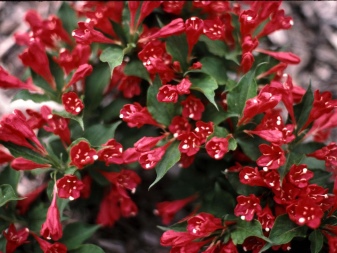
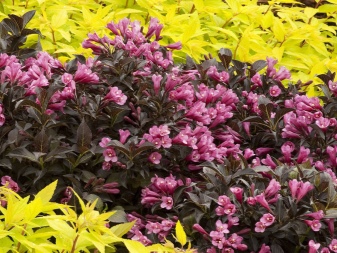
Peculiarities
Weigela belongs to the Honeysuckle family and is represented exclusively by shrub species. It got its name from the name of the discoverer Christian Weigel, who was engaged in research in the field:
- botany;
- chemistry;
- pharmacology.
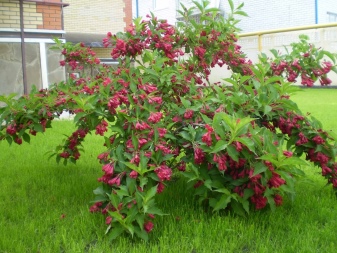
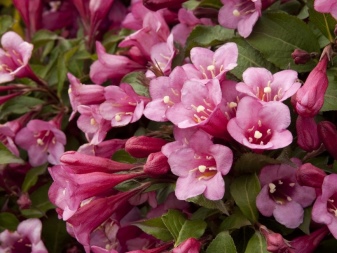
Wild weigela is found in the east and southeast of Asia. The northern border of the range covers the Russian Far East, and the southern border covers the island of Java.
In total, there are 15 species of deciduous shrub in the genus. But 8 of them are not considered graceful enough for garden cultivation. The same 7 varieties (and varieties created on their basis), which are selected by breeders, along with beauty, are also distinguished by unpretentiousness.
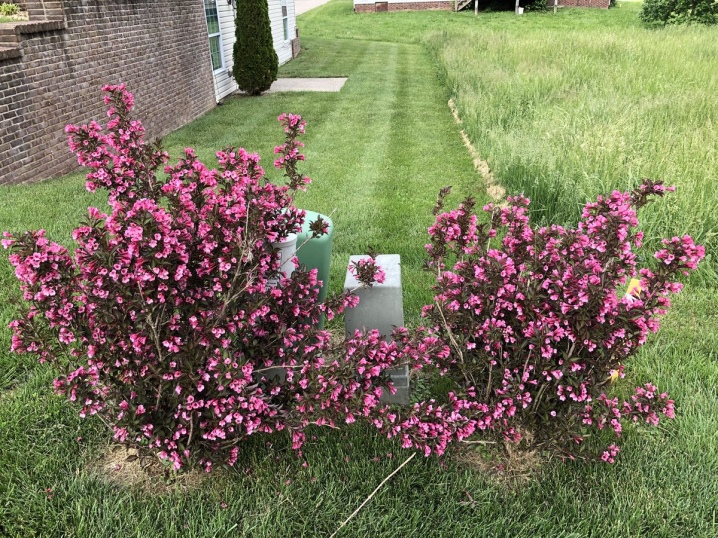
It is noted that weigela needs moisture and develops well when shaded. The formation of stolons is not typical. The leaf blades are of the opposite petiole type. Stipules are absent. Flowers reach 0.05 m in length. There are varieties of culture with single or several flowers connected in loose inflorescences.
The color of the flowers varies greatly, there are varieties and species with cream, pink, carmine red, yellow and other colors.
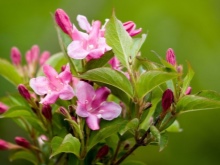
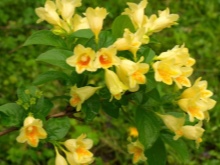
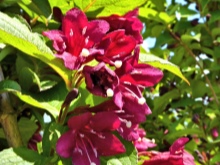
It should be noted that at the stage of flowering, the saturation of the colors only grows... Weigela fruits look like bolls with a pair of valves. Small seeds are located inside. The height of cultivated plant varieties ranges from 0.6 to 2 m. For information: in the wild, it is sometimes up to 2.5-3 m.
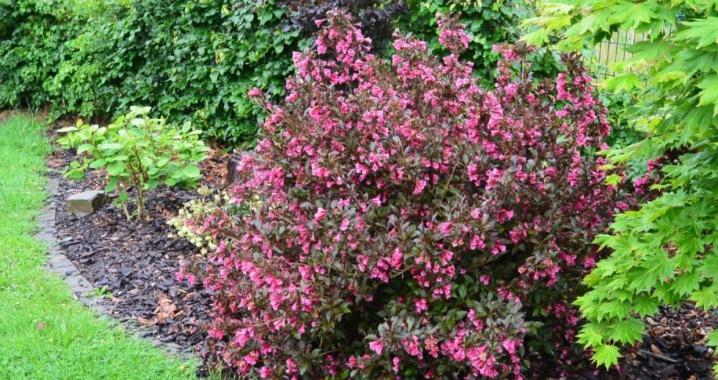
Varieties
Breeding work, carried out for decades, allowed to obtain an excellent variety of weigela varieties.
- The "Carnival" is considered to be especially attractive., in which each bush has flowers of a different color. Early weigela grows up to 2 m. A crown of increased density is formed in it. In the spring and summer months, the foliage has a bright green color, towards the end of the growing season, ocher notes are found.
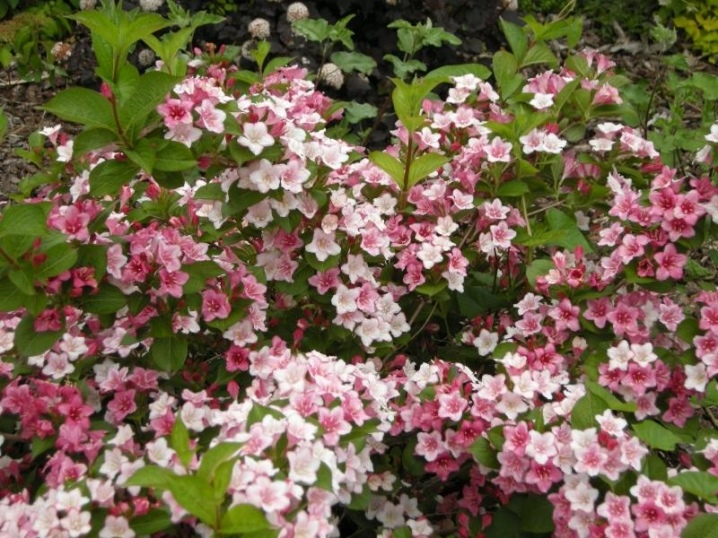
Due to the foliage and flowers, it is almost impossible to see the stems. Young shoots are covered with brownish and red bark. The flowering period takes an average of 20 days. The buds are distinguished by a delicate appearance and a red-purple color.
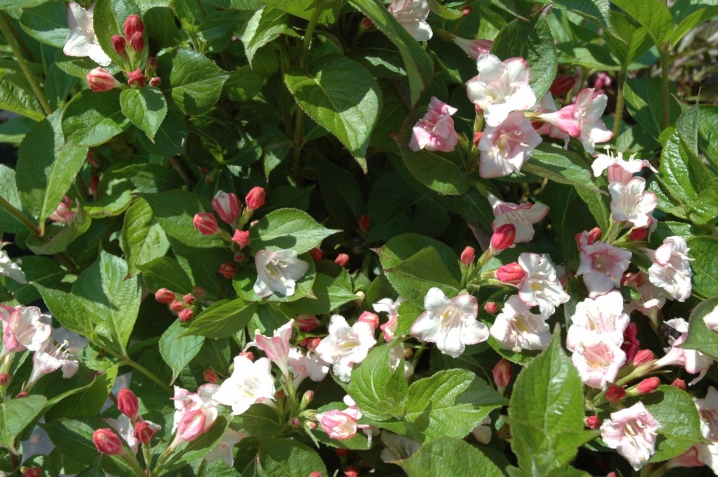
- The "Red Prince" variety has arrived to us from the USA. This plant forms spherical bushes up to 1.5 m wide. The crown looks neat, and the leaves have a juicy green color.
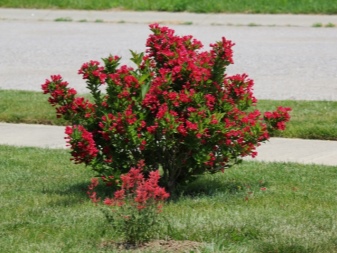

- The variety "Minor Black" is also popular.giving pink flowers with rich red notes. The height of the shrubs does not exceed 0.6 m. The variety is recognized by its unique dark red, almost black, foliage color.
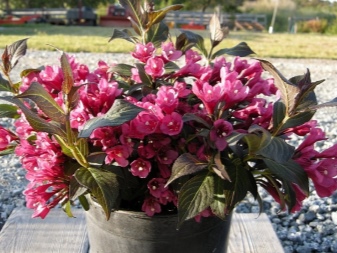
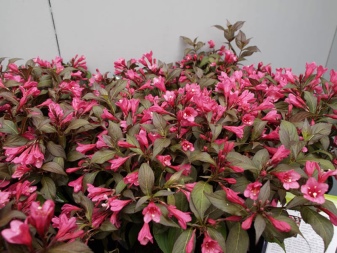
The buds of "Minor Black" bloom in the last days of spring and in the first decade of summer. The variety clearly prefers sun-drenched land, it develops poorly in shady areas.
According to experts, these plants need to be cut off the buds after flowering.
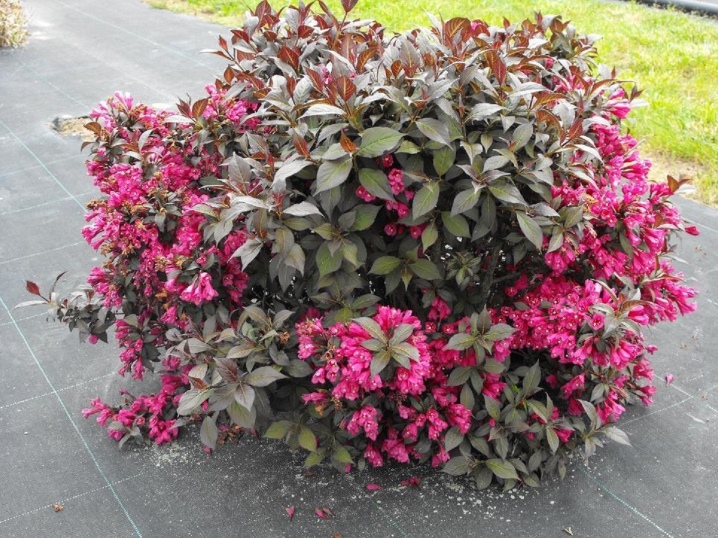
- As for the Magic Rainbow variety, then this crop stands out for the changing color of the foliage during the season. In the last days of spring, it has a yellow border with green notes, and by autumn the border turns red.
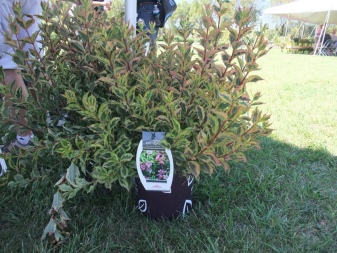
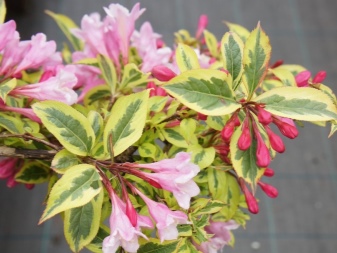
You can expect the appearance of pinkish buds at the "Magic Rainbow" in the first third of summer. Bushes can survive partial shade, but they need sun to thrive.
Important: without shelter for the winter from spruce branches, the culture can die even in the southern regions of the Russian Federation.
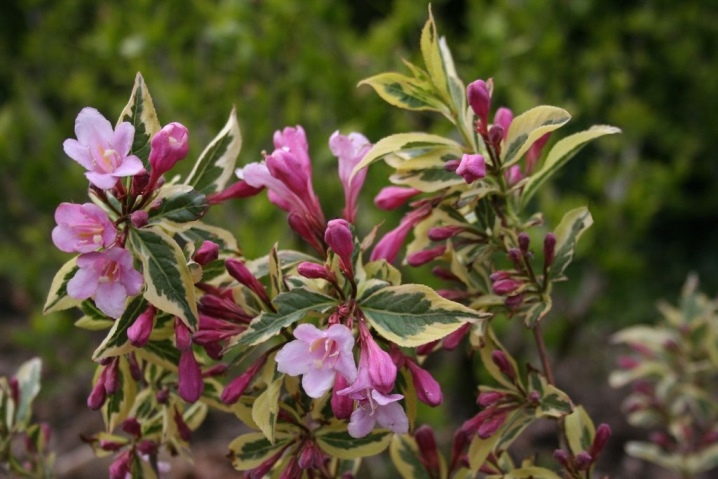
- Variety "Eva Ratke", which forms a pointed elliptical foliage up to 0.1 m long, deserves the pride of Polish developers. It is noted that this plant can bloom all 3 summer months, and the edges of its buds are darker than their middle.
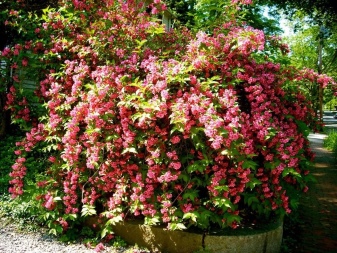
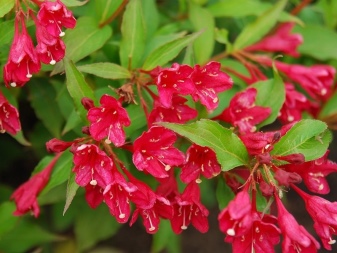
- The variety "Rosea" can also give good results.obtained by crossing Korean and flowering species. The plant forms a developed crown. But its height does not exceed 1.5 m. But large flowers of a soft pink color are formed.
A positive feature of "Rosea" is increased resistance to cold: in most of the territory of Russia, the plant needs a shelter of leaves.
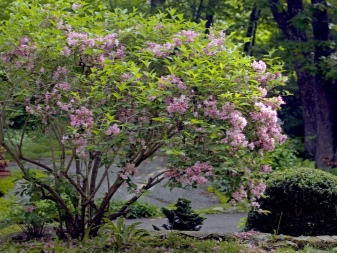
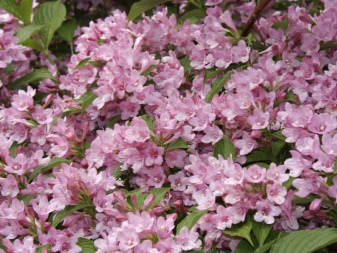
By the beauty of flowering, variegated weigela is deservedly distinguished.
The name is not accidental: a white border appears along the edges of the green leaves.
The width of the flowers does not exceed 0.04 m. They are both single and collected in clear groups. The bud is painted in a red-pink tone, along the edge of the petals are slightly lighter. Flowering continues in May and June. Under favorable conditions, re-emergence of buds can be expected in the first days of September.
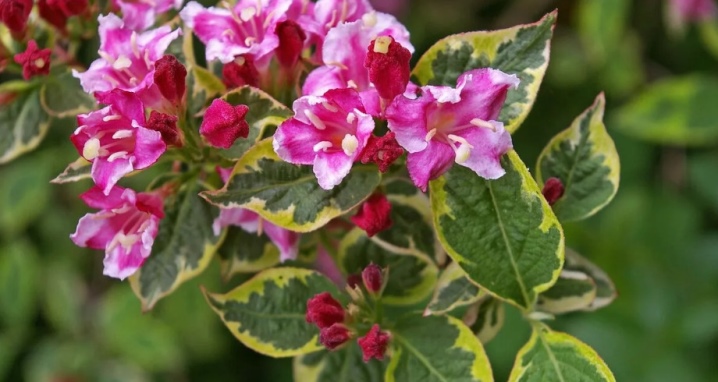
- Variety "Brighella" also produces compact bushes, but 1.5-2 m high. The plant is able to withstand even a fairly severe drought. For a short time, "Brighella" will survive the complete lack of watering, but it is better to irrigate it regularly.
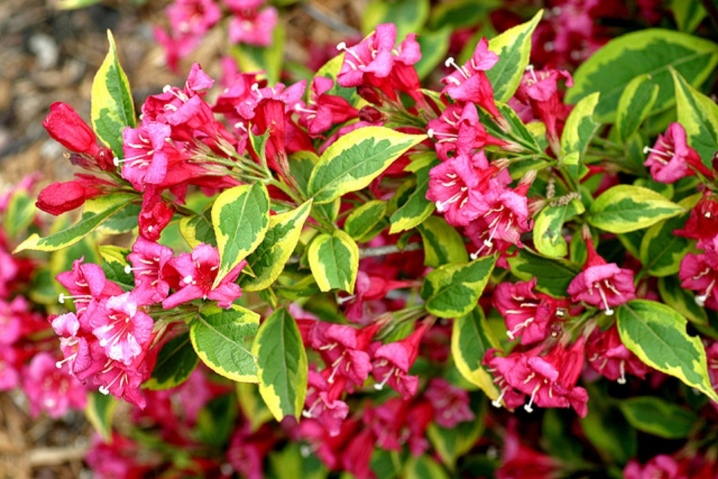
- Folis purpureus variety Is a weigela with purple or burgundy leaves. The natural range of this plant covers Japan, most of the territory of the PRC and the Russian Primorsky Territory. The shrub has a dense crown with an outer section of up to 2 m, reaching a height of 1-1.5 m.
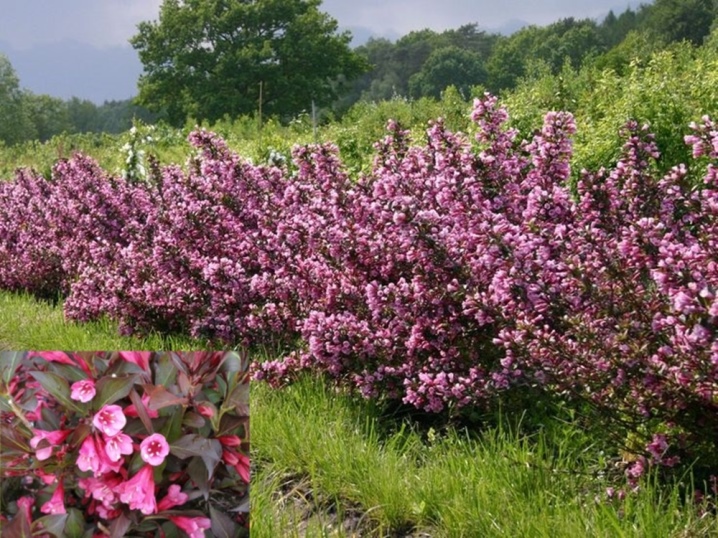
The flowers of the purple weigela are painted in a dark pink tone and have a yellowish center. Flowering covers June and July is quite abundant. Wintering is possible only with high-quality shelter. The plant can be used both in a decorative group and in a hedge.
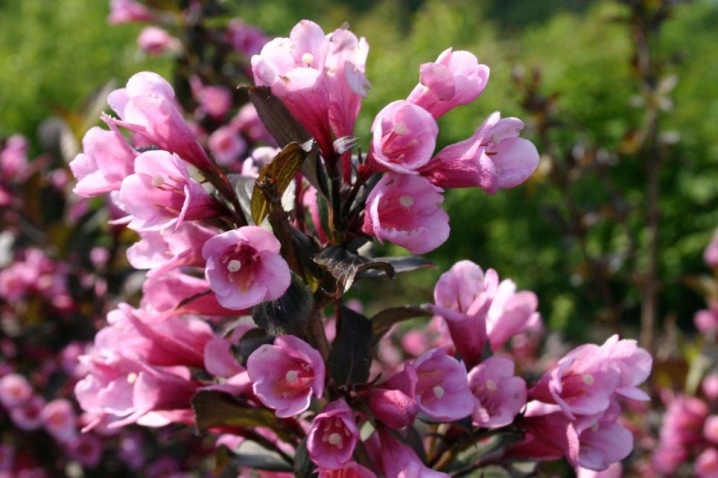
- Variety "Elvira" is a high density dwarf shrub. This weigela blooms profusely and for a long time. A common condition for her is the onset of re-flowering. This crop is often used in lawn curtains. It can develop normally both in the sun and in low shade.

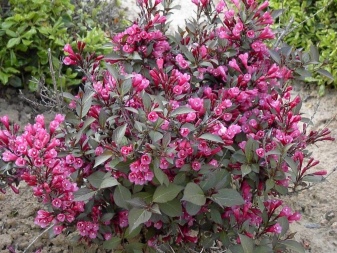
- Variety "Olympiada" gives bushes, growing up to a maximum of 1.5 m. Characteristic is the appearance of golden yellow foliage with a red border below. Important: The Olympics attracts honey bees. Flowering occurs in May and June. The culture is often planted in rocky gardens.
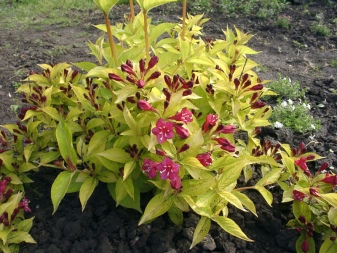
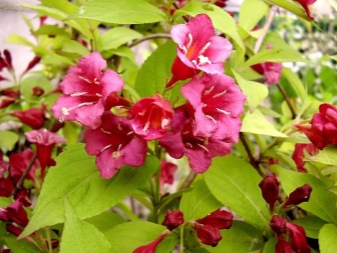
- Weigela "Nain Rouge" forms juicy red flowers. Leaves of a dense green color are strongly elongated.
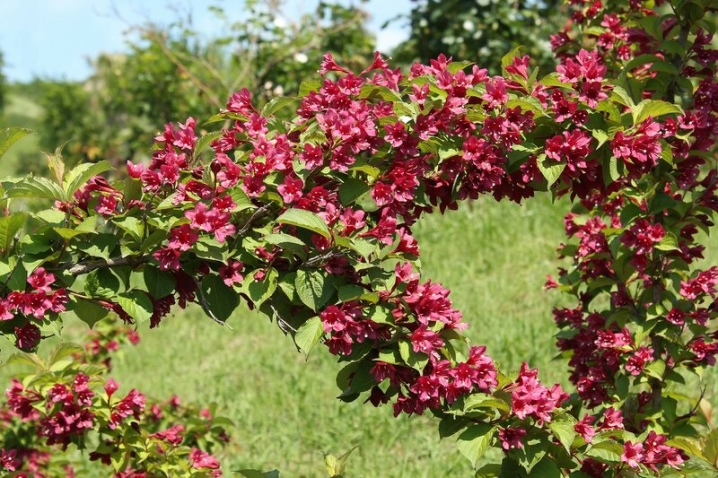
Although the plant loves the sun, if urgently needed, you can plant it in partial shade. The height and width of an adult bush are the same (1.2 m).
Important: Nain Rouge will not tolerate stagnant water in the soil.
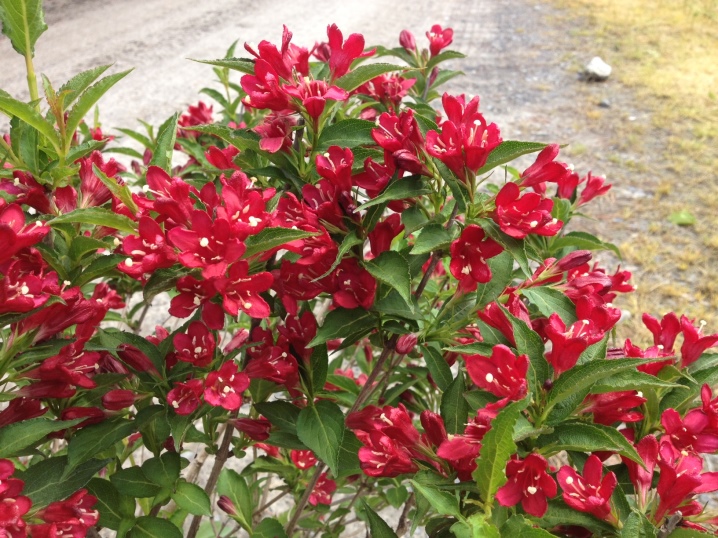
- Completing the overview of varieties is appropriate with an example japanese weigela... It is worth noting that due to its low resistance to winter, the prospects for cultivating the variety in Russian gardens are very modest. The shrub reaches a height of 1 m, bears fruit in the form of capsules with winged seeds. Leaves change color in mid-autumn. Shoots can develop vigorously even after a harsh winter (if proper shelter is made).
For your information: Japanese weigela is propagated by young shoots taken from a stump.

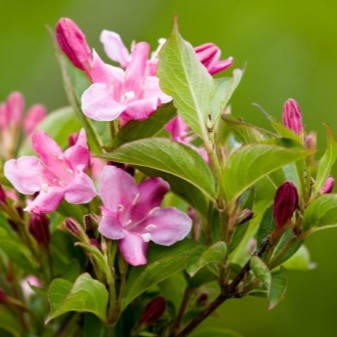
How to plant?
Weigela loves moisture and excellent light. However, the survival rate is sufficient for the plant to develop in a thin shade. One has only to remember that shading leads to a weakening of flowering. The culture suffers greatly from the wind, especially from the north. Weigela should be planted in open ground in the spring, waiting for the moment when the soil warms up, and the buds have not yet begun to swell.
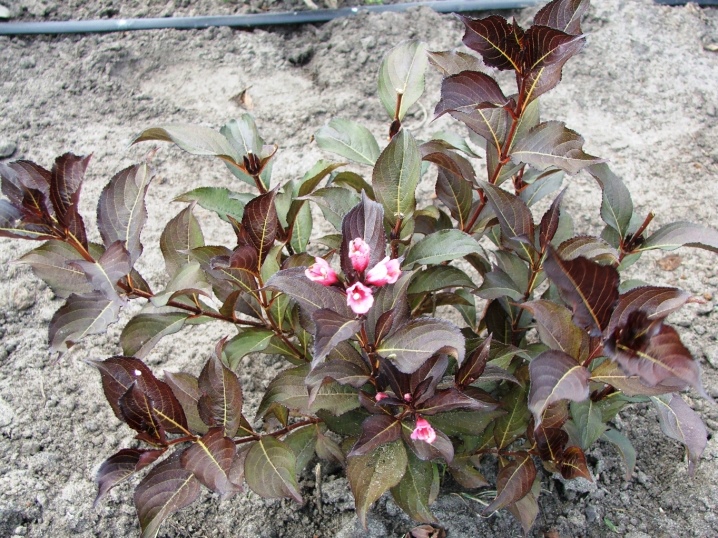
Important: it is better to leave attempts at autumn planting to professionals. This is too risky and not productive enough for beginners.
Only after gaining strength over the summer, weigela will be able to take root and survive the harsh winter season, continuing to develop in the next season. In this case, the culture must also be protected from drafts, which can lead to shedding of buds. Weigela loves loose soil. The earth must be saturated with nutrients.
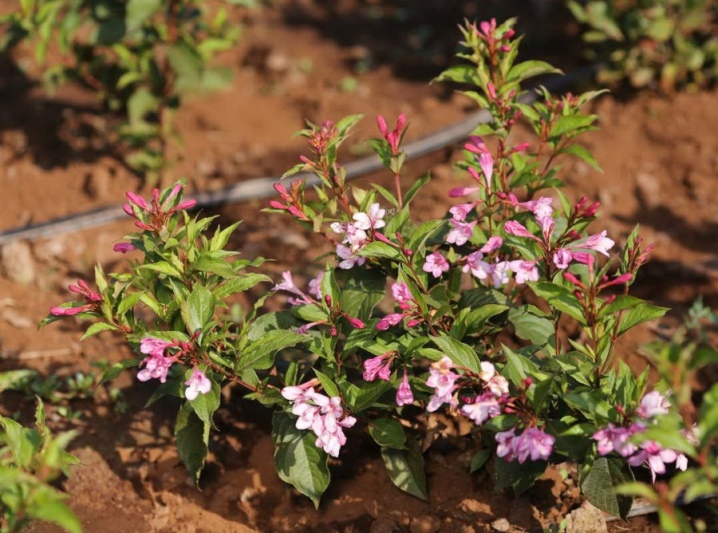
Preference should be given to soils with a neutral or weak alkaline reaction. Only weigela Middendorf can grow on peat. In any case, for planting, you need to choose seedlings at least 3 years old. Since moisture should be moderate, lowlands or places with a high groundwater table should not be used. If the soil is relatively acidic, it is treated with lime since the fall.

Early weigela, a variety named after Middendorf and weigela pleasant, are suitable only for the south of the Far East: these plants cannot be cultivated in the Urals and Siberia.
The rest of the varieties allow such experiments to be carried out, but the peculiarities of each type must be taken into account. Before planting (in the first 3 years of development), the weigela is usually kept in a tub. If the soil is sufficiently saturated with useful substances, an excavation is made by 0.3-0.4 m. In more poor soil, the depth of the pit is increased.
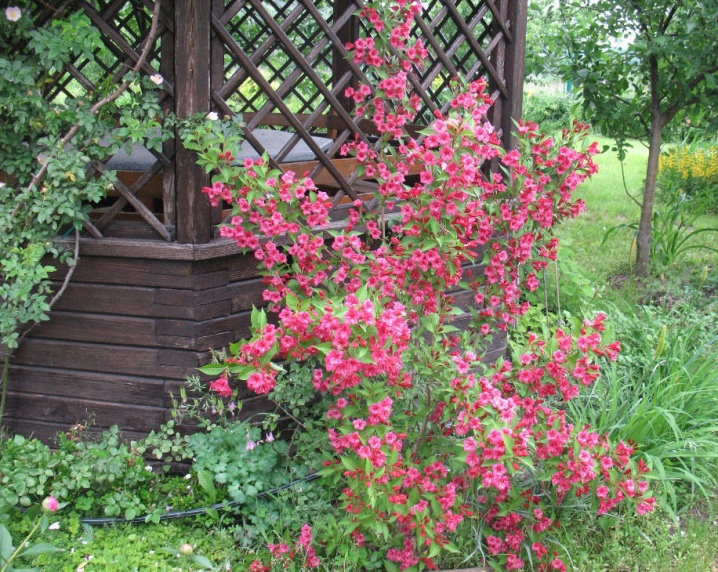
To make Weigela feel better after disembarking, do the following:
- treat the roots of the bush with a stimulating composition;
- drainage is placed in a pit (0.15 m of brick battle, gravel or sand);
- the top is fertile soil, improved by the addition of nitrophoska.
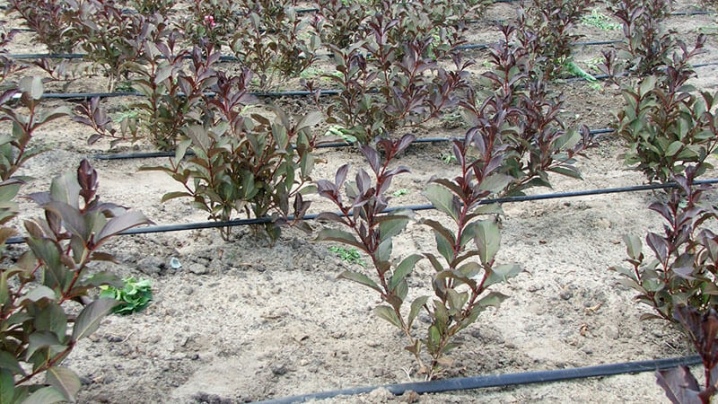
Some of the weigela varieties form large bushes. And they need to provide free space for full development: at least 1.5 m.
For ordinary and dwarf varieties, a free gap of 0.7-0.8 m is enough. The roots of the planted weigela must be straightened carefully, without unnecessary effort. Excessive deepening of the root collar is unacceptable. Abundant watering of the seedling is carried out immediately after planting and in the next 3-4 days.
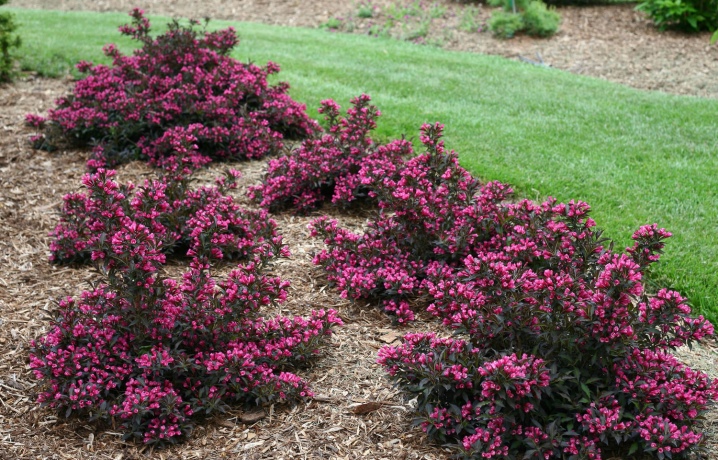
Correct care
Watering
In general, caring for a weigela is no more difficult than for other flowering shrubs. Therefore, any sufficiently experienced gardener can cope with it.
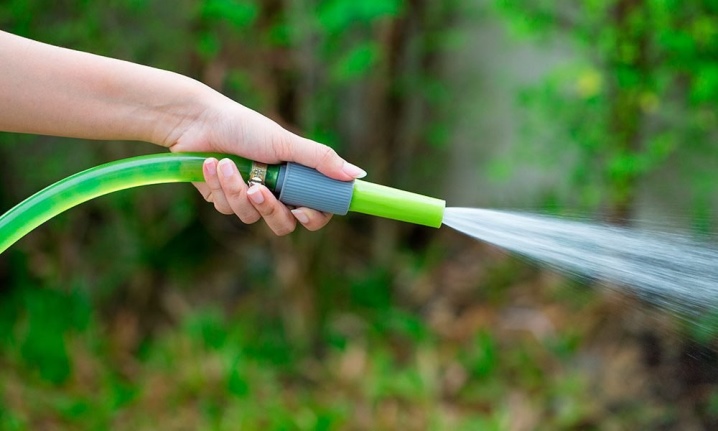
If the site has been mulched, frequent irrigation is not needed.
After a winter with little snow, especially if frozen shoots are found, watering in the spring should be more active. For each bush, 10 liters of water are consumed. Exactly the same amount is used in hot dry periods once a week.
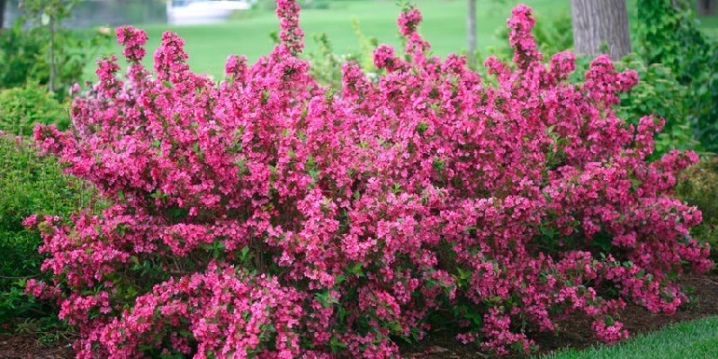
Top dressing
If initially nitrophoska and compost were used in the required amount, there is no need to apply new fertilizers in the next 2 years. Starting from 3 years old, it is required to feed the plant with stimulants for the development of branches and roots. One of the options involves the introduction in early spring (before the end of the snow melt):
- 0.02 kg of urea;
- 0.01 kg superphosphate;
- 0.01 kg of potassium salts (all concentrations are indicated per 1 m 2).
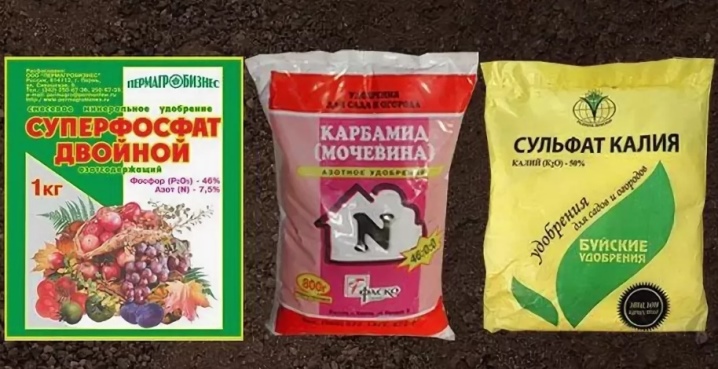
Instead of this mixture, you can add:
- ammophoska;
- Kemiru-Lux;
- diammofosku;
- other nitrogen-phosphorus-potassium supplements.
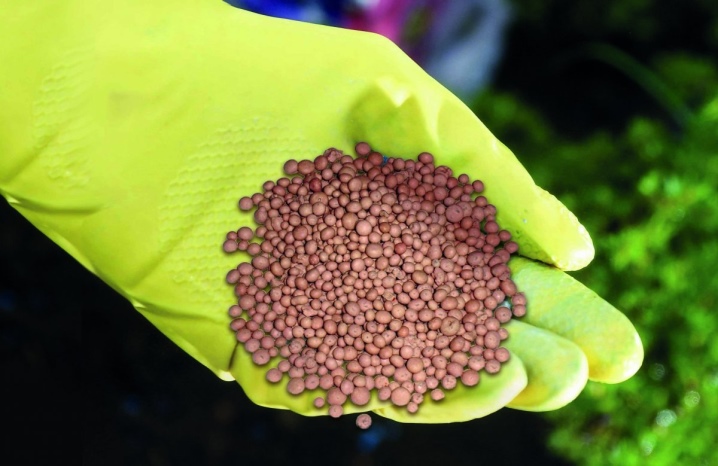
The second time the fertilizer is required to be used when the buds begin to fold in late spring. At this point, it is recommended to give each bush 0.03 kg of superphosphate.
Such feeding activates flowering, at the same time contributing to the strengthening of the branches by the beginning of winter.
The last top dressing of the season is carried out immediately before digging for the winter. For the additive use 0.2 kg of wood ash per 1 m 2 or Kemiru-Lux in accordance with the instructions.
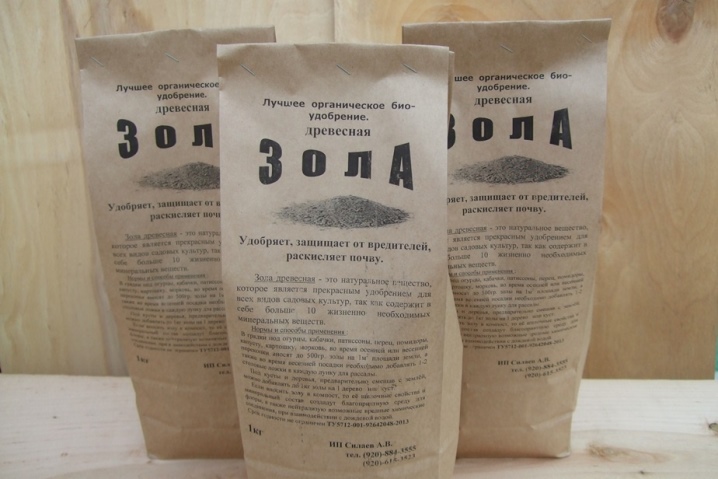
Pruning
Like any other shrub, weigela also requires systematic pruning. Young bushes are sanitized. It is easiest to deal with frozen and simply excess branches in March and early April. Then they get rid of the broken shoots. An adult weigela is trimmed to give the desired shape. This procedure is carried out exactly after the end of the first flowering.
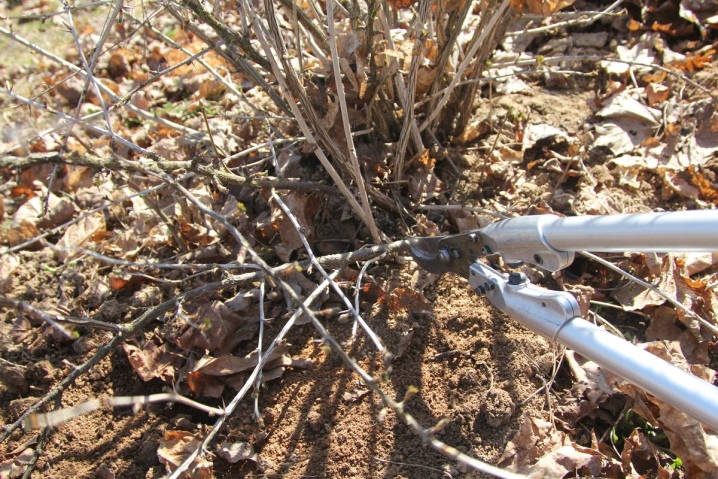
Important: if you do not rush with such a manipulation, you may find that summer shoots have already appeared, which will give flowers at the end of the season.
In this case, you will have to skip the procedure, otherwise you cannot count on re-flowering. The third pruning is carried out less often than the second, at most once every 3-4 years, and is designed to rejuvenate the bush. At the same time, too old branches are removed, and the rest of the plant is reduced by 30%. Sometimes, if the plant is very decrepit, all shoots are removed altogether - this is the last resort for radical rejuvenation.
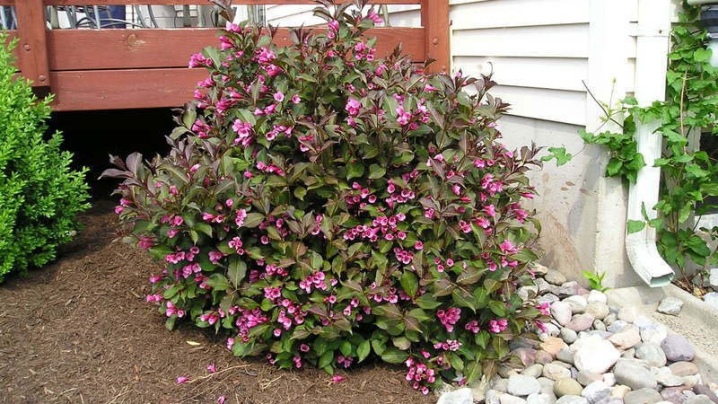
Loosening
Since the roots of the weigela are sensitive, you will have to loosen the soil with great care and without haste. Wherein loosening should be quite deep, at least 1 spade bayonet... Instead of loosening the near-trunk strips, mulching is often used. But if you do not dig the ground at all or do it irregularly, you may encounter poor flowering.
If the soil is not mulched, additional loosening will be required after each watering.
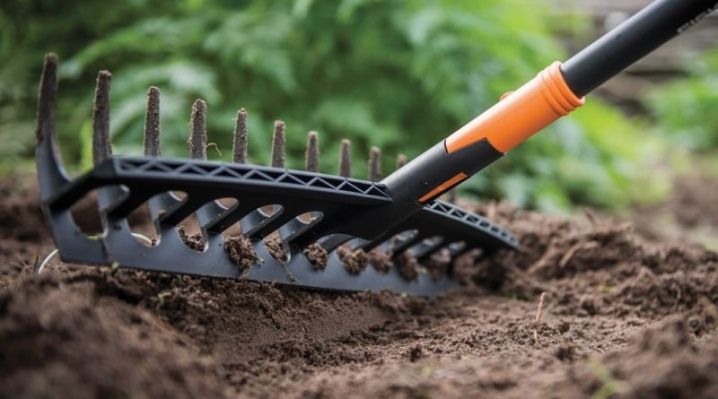
Do I need to transplant?
Theoretically, transplanting a weigela to another location is permissible. In practice, however, this is a very complex and responsible procedure, which must be resorted to only when urgently needed. Some inexperienced gardeners choose the wrong place for planting, and in such cases, of course, the problem needs to be solved. However, if the plant is developing normally and is not experiencing problems, it is best to leave it where it was originally. Even if some mistakes are made, it is better to try to correct the situation.
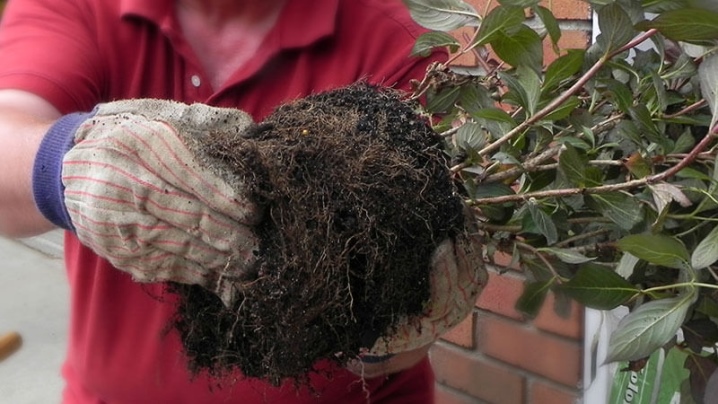
If you can't do without a transplant, then you need to carry out the procedure in April, and not in the fall.
Otherwise, a weak root system can be severely affected by the early cold weather. The selection of a site for transplanting should occur for the same reasons as when planting a crop from scratch.
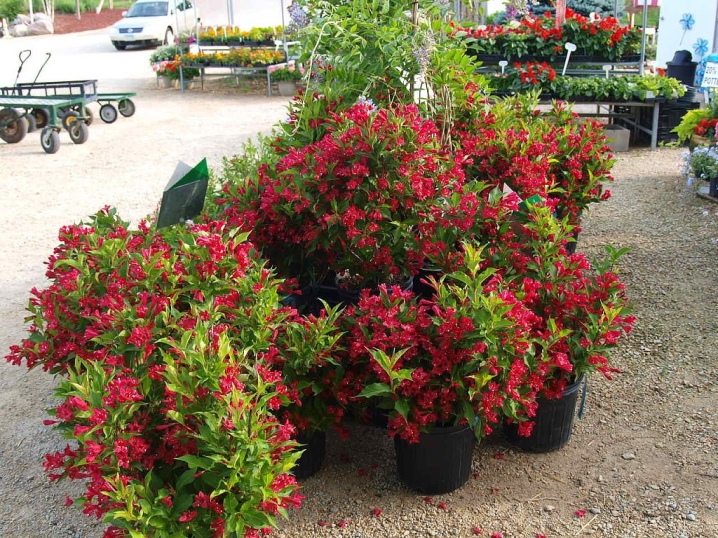
To improve the sandy loam so that they do not lose water too quickly, add peat and clay, and then mix it all until smooth.
The laying of brick chips and sand or gravel of small fractions helps to get rid of excessive dampness.
In the most advanced cases, drainage systems are erected. To improve the substrate during transplantation, manure, compost or complex mineral preparations are used. It is imperative to dig the earth for 1 shovel bayonet. The technology of disembarkation and transplantation is not much different.
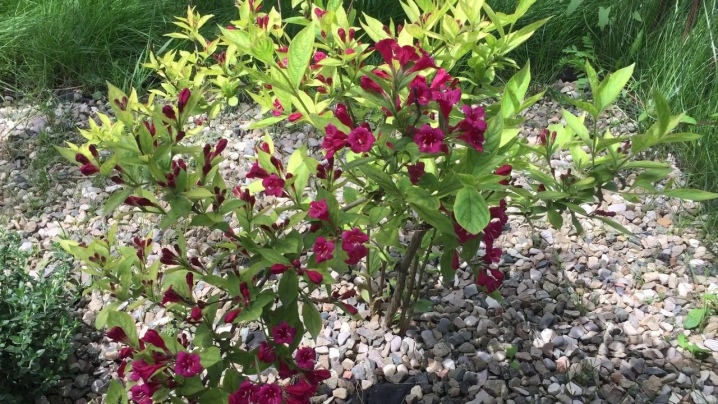
Preparing for winter
Bushes older than 5 years do not experience a special need for shelter. The thing is that over time, weigela's resistance to cold only grows. However, if you do not cover the plants of the first years of life, you can face serious problems. A special shelter will also be required for sick and recently transplanted specimens.
It should be remembered that the danger is not only frost, but also snow, which can break fragile twigs.
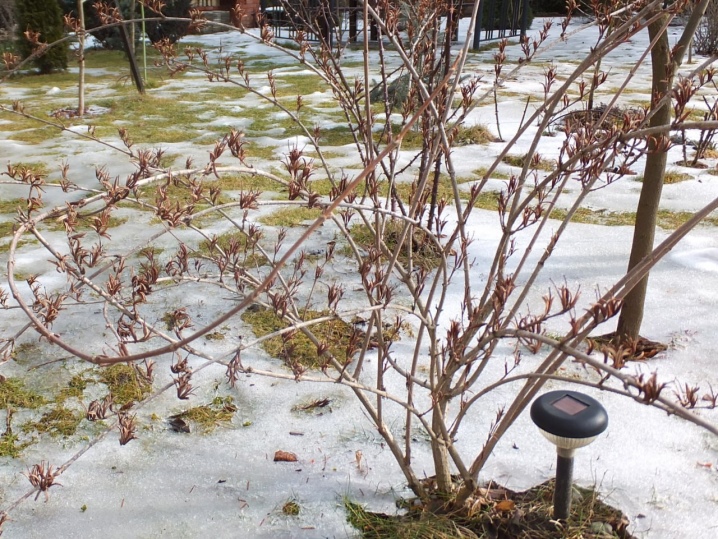
Covering work is started as soon as the approach of frost is indicated. First, a frame is created from flexible wooden arches. A film or other strong material is placed on top, and the edges are pressed with soil. If you can be afraid of long and / or severe frosts, you should put straw or hay on top. Branches for the winter must be bent down. They are wrapped in burlap, then they are carefully taken down and fixed with hooks.
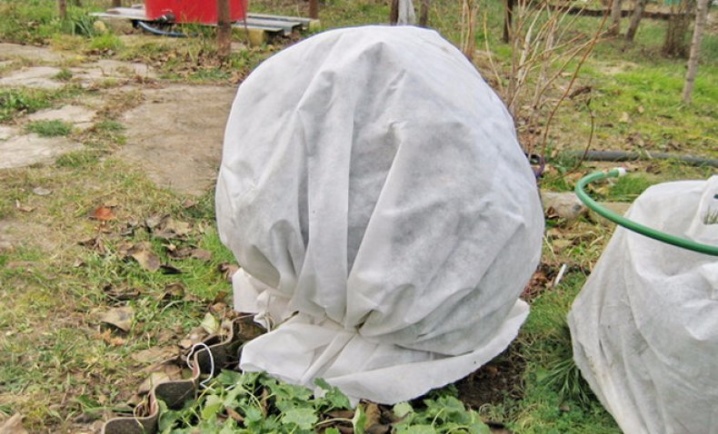
Reproduction methods
For those who grow an attractive plant like weigela, it is helpful to know how to propagate it. Agronomists have long found that seed breeding allows:
- ensure the highest productivity;
- increase frost resistance;
- guarantee resistance to other adverse influences.
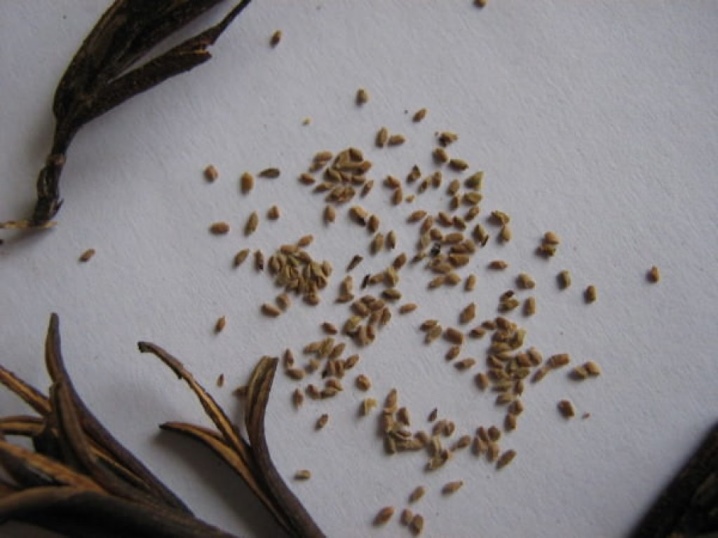
Weigela seeds reach maturity in early autumn. It is difficult to collect them due to their very small size, but the germination rate is 100%. Sowing is possible in both autumn and spring months. In the southern regions, the second option is preferable.
Important: stratification of planting material is not carried out, as well as embedding in the ground.
In this case, the seeds must be kept on top by a layer of peat or humus 0.5-1 cm thick. Additionally, it is slightly compacted to ensure the strength of the "trap". It is necessary to water the plantings abundantly using a sieve with a medium-sized cell. The seedlings are kept in one place for 3-5 years and only then are transplanted (as soon as the plant rises to 0.8-1 m). For mulching the soil, humus, high moor peat or leafy soil are used.
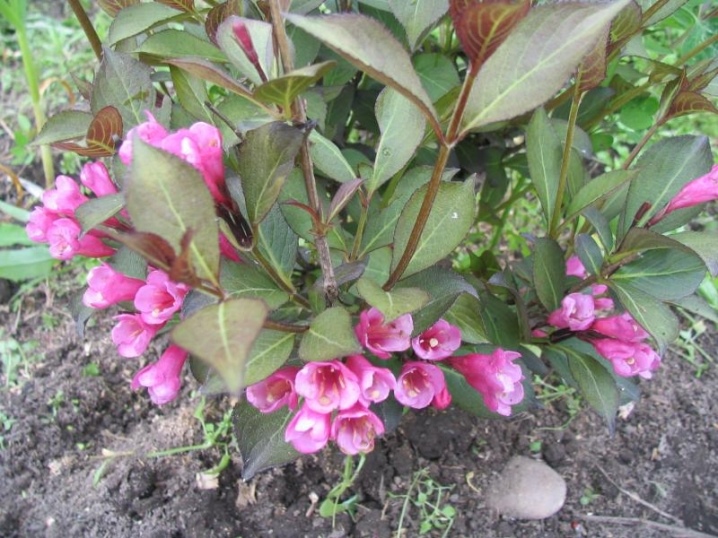
An alternative is to use lignified cuttings. A cut from the shoots of the first year can take root in any season. However, the best conditions for its development are in the spring months, before the buds begin to bloom. Sometimes green grafting is practiced, carried out 6-7 days after the beginning of flowering. Cuttings are prepared in November or in the first winter days, until severe frosts have come yet.
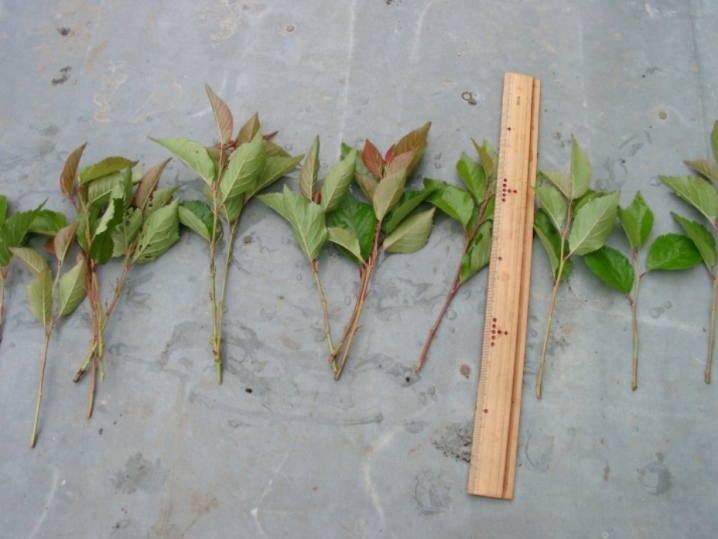
You can save the cut stalk in the cellar or just in a cold place (ditches under the snow are perfect).
It is extremely important: you cannot cut off the cuttings from the shoots overwintered in the field.
When forming a winter shelter for cuttings, you need to make sure that it guarantees total protection against overdrying and freezing. With the onset of spring, the planting material must be cut. Judging by the reviews of gardeners, propagation of weigela by cuttings is not difficult.
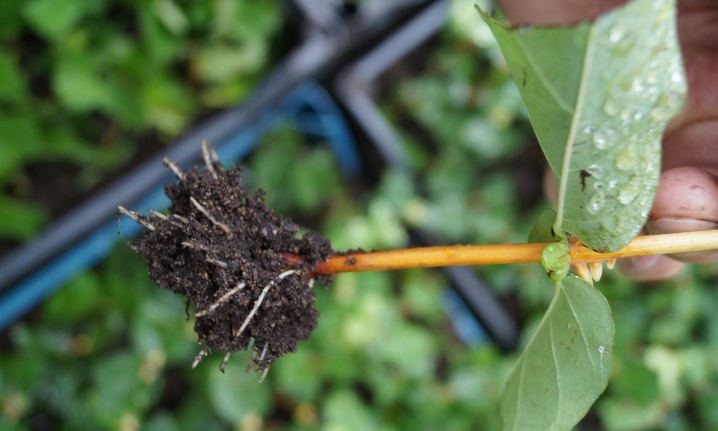
The lower cut is made under the kidney, and the upper one is 0.01-0.02 m higher than the highest of the kidneys. For planting directly into the ground, cuttings 0.25-0.3 m long are used. It is necessary to plant the planting material at an angle so that there are 4-6 paired buds outside. Rooting can be expected for 15-20 days. If the propagation method with green cuttings is chosen, the shoot should be cut at the very beginning of the lignification process (usually in the first 15 days of June).
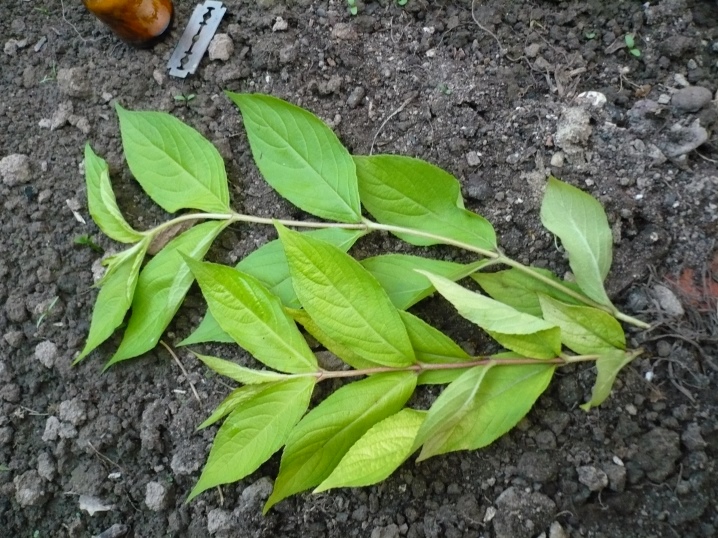
Important: it is better to take the pruner early in the morning, while the parts of the plant are saturated with juices.
Partial shearing of the sheet plate helps to minimize evaporation. The cut material is immediately immersed in water (not for long!), And then transplanted into loose soil placed in a container. 0.01-0.02 m of river sand is poured over it. Until the cuttings take root (this usually takes 10-14 days), the box must be kept under plastic wrap.
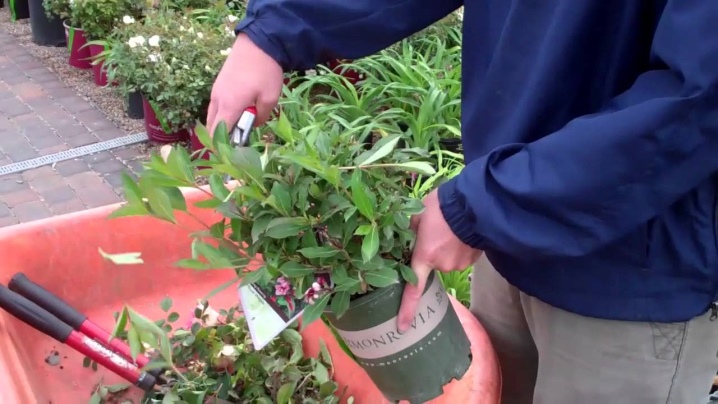
Diseases and pests
Weigela, for all its unpretentiousness, often becomes a victim of pathologies and harmful insects. The main danger to the plant is aphids and caterpillars gnawing foliage. Spider mites and thrips, which become active in extreme heat, rarely attack shrubs. Most often, by the most sultry period of summer, it will already fade. In most cases, agronomists recommend using Nitrafen, Rogor and Keltan.
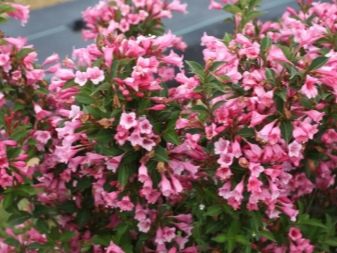

But these pesticides are extremely harmful to nature and dangerous even to humans. From natural formulations, it is recommended to use infusions on plants:
- red pepper;
- wormwood;
- garlic.
Noticing that the newly planted weigela turned yellow and began to fade, it can be assumed that the matter is in the introduction of the bear or the larvae of May beetles into the root system.
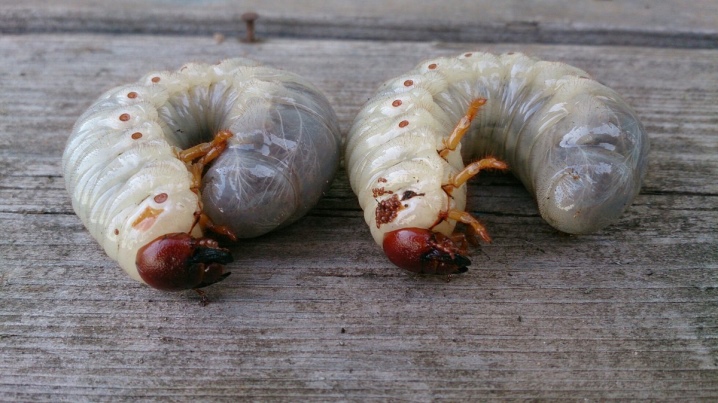
For the future, this will be a warning for the gardener: you need to carefully check the compost or humus when laying in the planting niche. Now all that remains is to spill the earth with water solutions of karbofos, "Aktara". Microbial and fungal infections are successfully suppressed by Bordeaux fluid. To avoid their appearance, it is necessary to carry out treatment with "Topsin" (solution 3%) during the formation of leaves.

Possible problems
If the weigela bushes dry out after planting, the development of the plant is weak, and the leaves and branches do not increase in size, most likely the cause is freezing. Top dressing and treatment with Epin is a good treatment. The problem may also be related to the lack of shelter for the winter (or poor quality shelter). It is necessary to inspect whether the green parts of the plant remain.
If the culture does not wake up for a long time (until early June inclusive), and new green shoots do not appear, it remains only to uproot it.
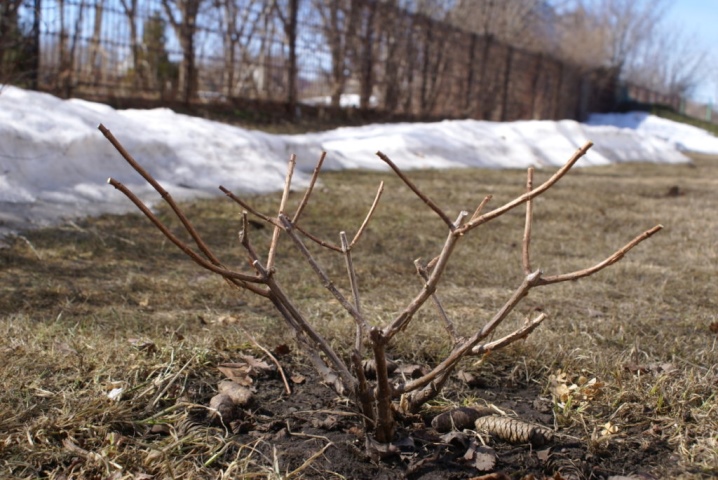
Cutting leaves and processing with epin do not always help out weigela when wilting. The sooner this is done, the better the chances of success. You cannot assume that everything will pass by itself. If you have to replant a crop in the summer months, shelter from the scorching sun for 15-20 days will help to avoid wilting, until adaptation to a new place is over. Small bushes are covered with buckets in which holes are punched, and larger ones - with shields or spunbond.
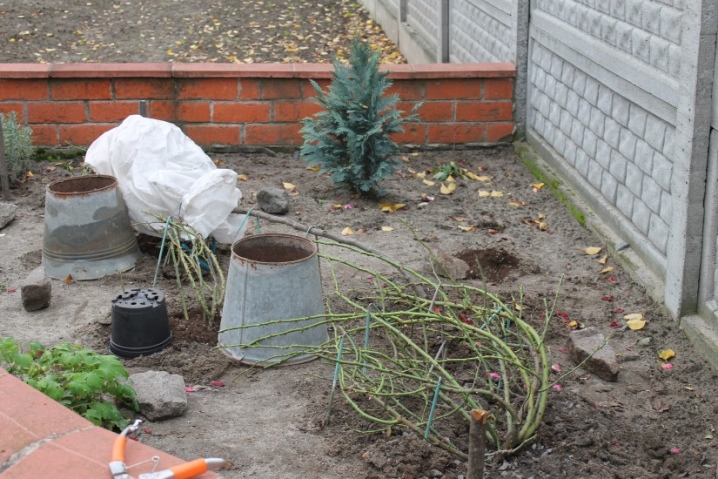
Use in garden design
It is not enough just to grow a weigela bush - it is important to know how it is used in landscape art and how it is combined with ornamental trees. Like other shrubs, this type is the main filler of the garden and creates volume... With the help of a nice looking shrub, you can divide the territory into specific areas, it will emphasize the beauty of the landscape during flowering.
Important: according to experienced designers, weigela is suitable as a way to visually connect stunted annual grasses and trees. But it can also be used autonomously.
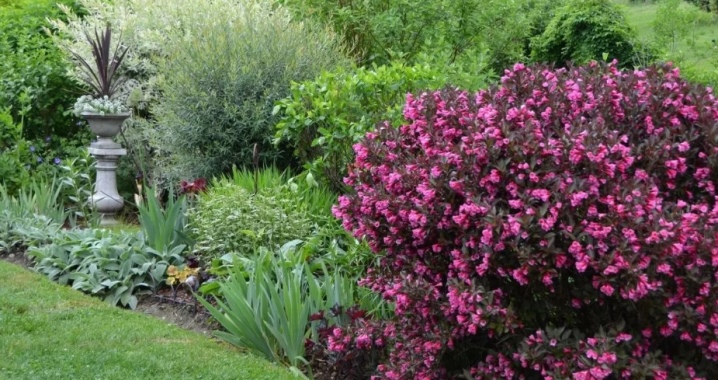
Often this culture is "trusted" with the function of a hedge. In this case, a barrier appears not only from piercing winds, but also from various animals and other uninvited visitors. If you want to create a low curb, they resort to a systematic haircut. Such a framing is able to decorate even the simplest lawn. This solution will look especially good on the approach to the house or at the beginning of the lawn.
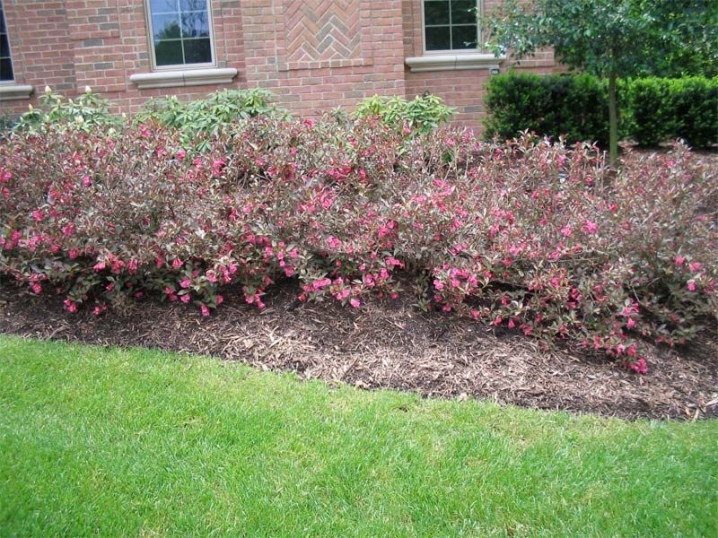
Weigela is often used as a background for conifers and other perennial crops. It makes the space more picturesque. With the help of pruning shears and other tools, it is easy to give the plant a completely unusual look. You can grow this crop on an alpine slide. Ideally combined with weigela:
- junipers;
- derain;
- different types of rhododendrons.
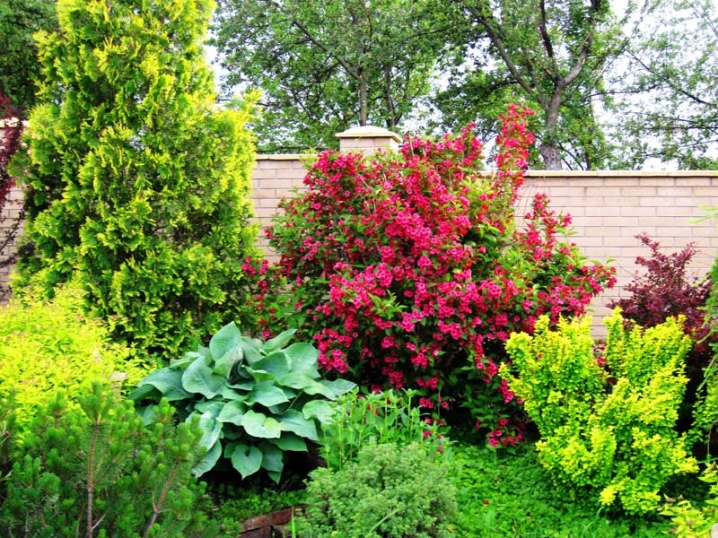
In the next video, you will learn how to grow weigela on an interlaced stem.



































































The comment was sent successfully.